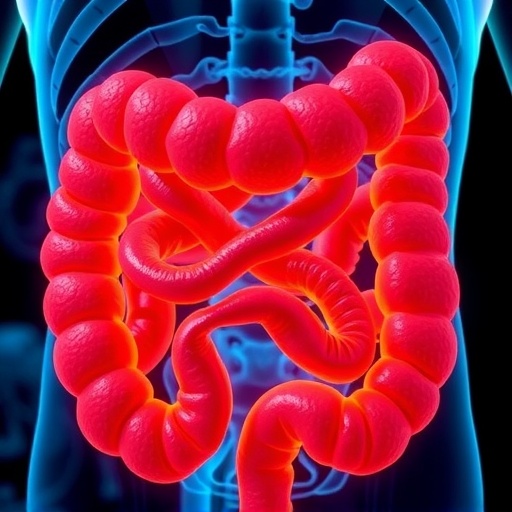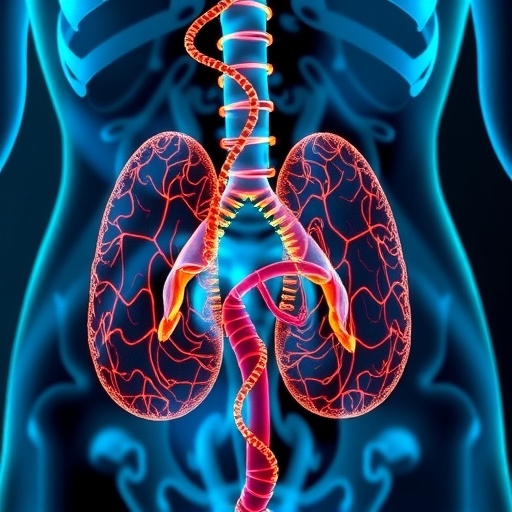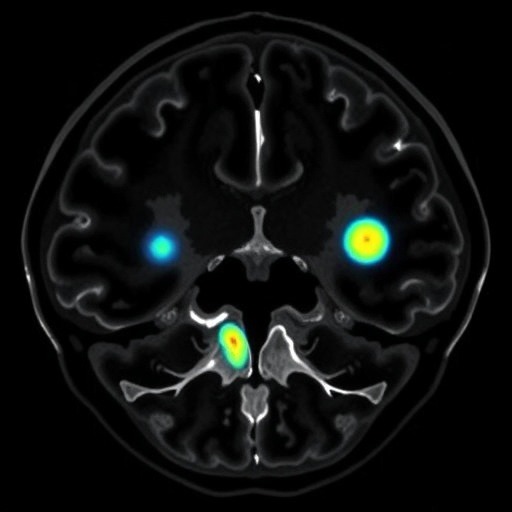Circulating tumor cells (CTCs) represent a pivotal frontier in cancer research, particularly concerning their role in tumor dissemination and metastasis. A new study published in BMC Cancer sheds light on the perioperative dynamics of CTCs in patients undergoing surgery for resectable colorectal cancer (CRC). This research provides compelling insights into how fluctuations in the number of CTCs before and after tumor resection can reflect tumor aggressiveness and potentially predict patient prognosis, opening new avenues for refined cancer management.
The investigation enrolled 81 patients diagnosed with resectable colorectal cancer, alongside 20 control individuals diagnosed with adenoma. Researchers meticulously quantified peripheral blood CTCs employing advanced microfluidic chip technology, both prior to and following surgical intervention. This technological approach ensures high precision and sensitivity in detecting these elusive tumor-derived cells, which circulate in the bloodstream and are believed to be instrumental in metastasis formation.
One of the most striking findings in this study was the significant reduction in median CTC count observed after surgery. Before tumor removal, patients exhibited a median count of 16 CTCs per 5 milliliters of blood; this number sharply declined to a median of 4 postoperatively. This rapid decrease underscores the immediate impact of surgical resection on tumor cell shedding into the bloodstream, highlighting the potential of CTCs as real-time biomarkers reflecting tumor burden and surgical efficacy.
Preoperative evaluation revealed that approximately 76.6% of patients were CTC-positive, indicating a substantial presence of circulating tumor cells prior to surgery. After the surgical procedure, this positivity rate dropped to 56.8%, signifying that surgery can effectively reduce but not entirely eliminate the presence of CTCs. This residual positivity hints at possible microscopic disease persistence or early dissemination, which may influence long-term outcomes.
A key aspect of research in oncology involves understanding predictors of lymph node metastasis (LNM), a known harbinger of poorer prognosis in colorectal cancer. The study’s univariate analysis identified multiple factors associated with increased risk for LNM, including advanced tumor stage (T3-4), nerve invasion, vascular invasion, and preoperative positivity of circulating tumor cells. These findings collectively reinforce the multifaceted nature of tumor spread, involving both histopathological characteristics and circulating biomarkers.
Multivariate logistic regression further refined these associations, demonstrating that vascular invasion and preoperative CTC positivity independently increase the likelihood of lymphatic spread. Specifically, vascular invasion presented an odds ratio exceeding 20, while preoperative CTC positivity conferred an eightfold increase in risk for lymph node metastasis. This statistical rigor affirms the robustness of CTCs as predictive indicators, potentially outperforming traditional histological markers alone.
From a prognostic perspective, the status of CTCs after surgery emerged as a crucial factor. Patients who were negative for circulating tumor cells in their postoperative blood samples exhibited significantly improved disease-free survival (DFS). This observation suggests that postoperative CTC negativity may serve as an early surrogate marker for reduced recurrence risk, enabling clinicians to stratify patients according to their likelihood of favorable outcomes.
The study advances the concept that perioperative monitoring of CTC dynamics could transform clinical management of colorectal cancer. By integrating CTC quantification into pre- and postoperative assessment, oncologists may be equipped with a powerful tool to tailor treatment strategies. For instance, patients exhibiting persistent postoperative CTC positivity might benefit from intensified adjuvant therapy or vigilant surveillance schedules to catch early signs of relapse.
Central to the study’s innovation is the application of microfluidic chip technology for CTC capture and analysis. This cutting-edge methodology leverages the physical and biological properties of tumor cells to isolate them from peripheral blood with high specificity and throughput. The technology not only facilitates accurate enumeration but also supports downstream molecular characterization, which could uncover mutational landscapes essential for personalized medicine.
Colorectal cancer remains a dominant cause of cancer-related mortality worldwide, and its prognosis heavily hinges on early detection of metastasis and recurrence. Traditional imaging and pathological evaluation, while indispensable, often fall short in identifying microscopic residual disease. The findings of this research underscore the complementary role of liquid biopsies, with CTCs acting as a minimally invasive biomarker reflecting ongoing tumor biology.
In terms of biological insight, the study highlights the aggressive phenotype of tumors shedding large numbers of circulating cells into the bloodstream. Preoperative CTC positivity correlates with established pathological features such as vascular invasion, implicating a tumor’s capacity to intravasate and colonize distant sites. Such insights refine our understanding of metastatic cascade, emphasizing the interplay between tumor microenvironment and systemic dissemination.
The decline in CTCs following surgery also emphasizes the impact of surgical manipulation in potentially reducing tumor cell dissemination. However, the persistence of CTCs in a significant subset of patients postoperatively raises questions regarding the biological characteristics of these surviving cells. Are they representative of chemotherapy-resistant clones, or do they possess unique attributes facilitating immune evasion and dormancy? These questions remain an exciting field for future inquiry.
Importantly, this study’s prospective design and sizable cohort lend credibility and generalizability to the conclusions. Conducted at Jiangyin People’s Hospital over a two-year period, the investigation’s rigorous methodology and comprehensive follow-up data strengthen the evidence base linking CTC dynamics with clinical outcomes. The prospective nature particularly mitigates biases inherent to retrospective analyses, facilitating a clearer causal interpretation.
While these findings are promising, the authors prudently note the exploratory nature of the association between postoperative CTC positivity and disease-free survival. Larger, multicenter trials with extended follow-up are warranted to firmly establish CTCs as definitive prognostic biomarkers and to evaluate their utility in guiding adjuvant treatment decisions. Such investigations may eventually facilitate incorporation into standardized clinical protocols.
In sum, this seminal research underscores the clinical relevance of perioperative circulating tumor cell kinetics in resectable colorectal cancer. By illuminating the prognostic significance of pre- and postoperative CTC levels, it opens pathways for precision oncology interventions aimed at mitigating metastatic spread and improving long-term survival. This work exemplifies the transformative potential of liquid biopsy technologies in reshaping cancer diagnostics and therapeutics in the near future.
Subject of Research: The study focuses on the clinical implications of perioperative changes in circulating tumor cells in patients with resectable colorectal cancer and their associations with lymph node metastasis and prognosis.
Article Title: Clinical relevance of perioperative changes in circulating tumor cells in resectable colorectal cancer
Article References:
Feng, Q., Ni, C., Zhou, F. et al. Clinical relevance of perioperative changes in circulating tumor cells in resectable colorectal cancer. BMC Cancer 25, 1689 (2025). https://doi.org/10.1186/s12885-025-15087-8
Image Credits: Scienmag.com
DOI: https://doi.org/10.1186/s12885-025-15087-8
Tags: advanced microfluidic chip technologyblood-based biomarkers in cancercancer metastasis researchcirculating tumor cells in colorectal cancercolorectal cancer surgery outcomesCTC count measurement techniquesimpact of surgery on tumor cell sheddingpatient prognosis in colorectal cancerperioperative dynamics of CTCsresectable colorectal cancer studysurgical intervention and CTC reductiontumor aggressiveness prediction





